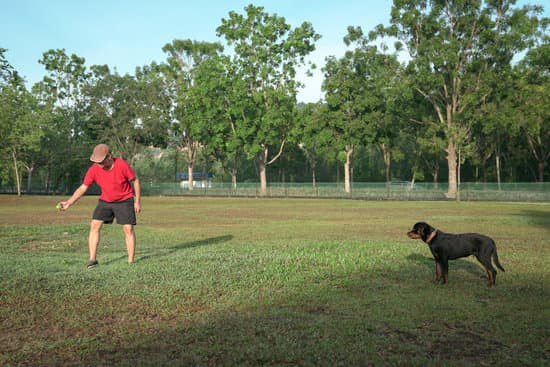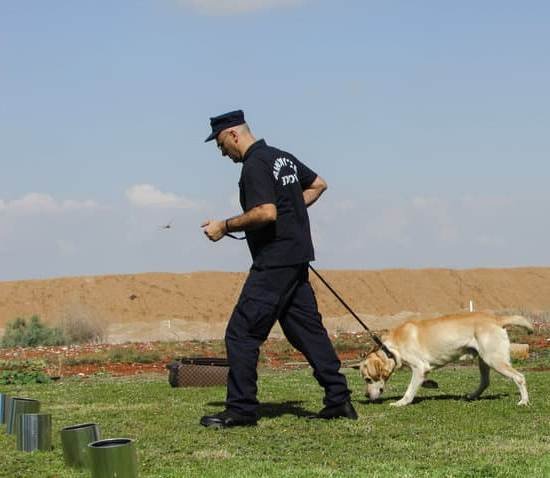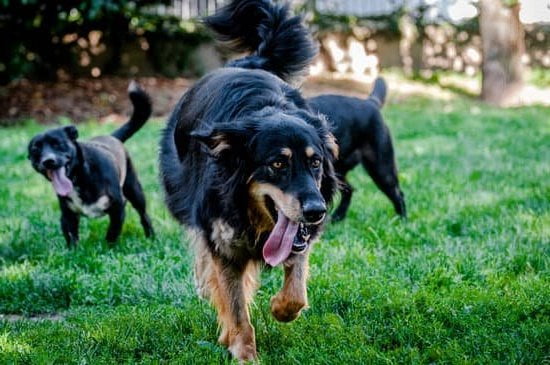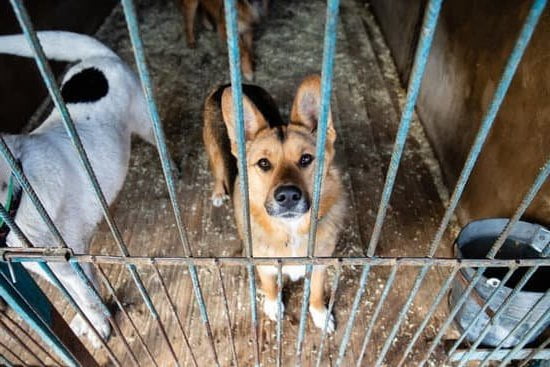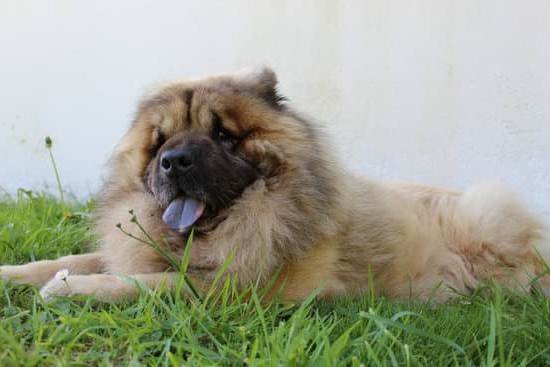Are you considering dog protection training for your furry companion? Training your dog for protection can provide an added layer of security and safety for you and your family. In this article, we will explore the importance and purpose of dog protection training, as well as the key concepts and principles to know before embarking on this journey with your four-legged friend.
Understanding the significance of dog protection training is crucial in ensuring that your dog is able to respond effectively in potentially dangerous situations. From basic obedience commands to advanced protective techniques, proper training can equip your dog with the skills necessary to protect you and your home.
Choosing the right breed and temperament for protection training is also essential. Not all dogs are suited for this type of training, so it’s important to consider factors such as breed characteristics, temperament, and willingness to learn. Additionally, understanding the role of the owner in building a strong bond and trust with their canine companion is vital for successful protection training.
In the following sections, we will delve into the basics of dog protection training, including equipment needed to get started, step-by-step training techniques, common mistakes to avoid, and advanced tips for taking your dog’s skills to the next level. Whether you’re new to dog ownership or looking to enhance your pet’s protective abilities, this comprehensive guide will provide valuable insights into effective dog protection training methods.
The Basics of Dog Protection Training
When it comes to dog protection training, there are key concepts and principles that every owner should be aware of. One of the most important things to understand is that protection training is not about turning your pet into an aggressive animal, but rather about teaching them control and obedience in potentially dangerous situations. A well-trained protection dog can be a valuable asset in safeguarding your home and family.
One of the fundamental principles of dog protection training is to establish clear boundaries and rules for your pet. Consistency is key when teaching your dog to protect, and they must understand that their protective behavior is only acceptable under specific circumstances. It’s essential to differentiate between protective instincts and aggressive behavior, as the goal is to train them to defend without posing a threat to non-threatening individuals or other pets.
Another important concept in protection training is socialization. While a protection dog needs to be able to discern threats, they also need to be well-socialized and comfortable with various environments. Proper socialization will help prevent your dog from becoming overly reactive or aggressive towards unfamiliar people or animals. It’s crucial for owners to strike a balance between teaching their dogs when it’s appropriate to protect and when it’s time to remain calm and friendly.
| Concepts | Principles |
|---|---|
| Establishing clear boundaries | Consistency in training |
| Socialization | Balance between protecting and remaining calm |
Choosing the Right Dog for Protection Training
When it comes to choosing the right dog for protection training, there are several key considerations that potential owners should keep in mind. Not all breeds are well-suited for protection training, and temperament plays a crucial role in determining a dog’s ability to excel in this type of training. Here are some important factors to consider when choosing a dog for protection training:
- Breed characteristics: Certain breeds are known for their natural protective instincts and make ideal candidates for protection training. Breeds such as German Shepherds, Rottweilers, Doberman Pinschers, and Belgian Malinois are commonly used in protection work due to their loyalty, intelligence, and physical capabilities.
- Temperament: In addition to breed characteristics, it’s essential to consider the temperament of a potential protection dog. Dogs that are confident, alert, and have a strong desire to please their owner tend to be well-suited for protection training. Aggression is not necessarily a desirable trait for a protection dog, as controlled aggression and discernment are more valuable qualities.
- Training potential: When selecting a dog for protection training, it’s important to assess their willingness and aptitude for learning. Look for a dog that shows enthusiasm for tasks and has good focus and attention. A dog with a strong work ethic and drive will be more responsive to the demands of protection training.
In addition to these considerations, it’s important for prospective owners to understand that protection training is not suitable for every dog. It requires dedication and commitment from the owner, as well as careful selection of the right candidate for this type of work.
Remember that every individual dog is unique, so it’s crucial to assess each potential candidate on an individual basis before embarking on the journey of dog protection training.
Essential Equipment for Dog Protection Training
Dog protection training is a crucial aspect of ensuring the safety and security of your home and family. In order to effectively train your dog for protection, it’s important to have the right equipment to get started. This section will cover the essential tools and gear you will need to begin the training process.
One key piece of equipment for dog protection training is a properly fitting harness or collar. This will not only ensure that you have control over your dog during training, but it will also provide comfort and safety for your canine companion. It’s important to choose a harness or collar that is specifically designed for protection work, as these are often sturdier and more secure than standard options.
In addition to a harness or collar, you will also need a sturdy leash for control during training sessions. A good quality leash that is made from durable materials such as leather or nylon can help you communicate effectively with your dog and guide them through the necessary exercises. Other equipment that may be useful includes bite sleeves, muzzles, and protective gear for yourself in case of accidental bites during training.
Finally, having access to a secure and enclosed training area such as a backyard or private space is essential for dog protection training. This provides a safe environment for both you and your dog to work on developing the necessary skills without distractions or potential safety hazards. With these essential equipment ready, you can now start the process of teaching your dog how to protect and keep your family safe.
| Equipment | Importance |
|---|---|
| Harness/Collar | Control and Safety |
| Leash | Communication and Guidance |
| Bite Sleeves/Muzzles/Protective Gear | Safety During Training Sessions |
| Secure Training Area | Safe Environment for Training |
Training Techniques for Dog Protection
Dog protection training is a crucial aspect of ensuring the safety and security of your home and family. It involves teaching your dog to recognize threats and respond appropriately to protect you when necessary. Here are some step-by-step training techniques to help you teach your dog to protect:
1. Establish a strong foundation: Before diving into protection training, ensure that your dog has mastered basic obedience commands such as sit, stay, come, and heel. This lays the groundwork for more advanced protection training.
2. Introduce the concept of a threat: Start by familiarizing your dog with what constitutes a threat. Use different cues and commands to signal potential danger, such as a stranger approaching or a loud noise.
3. Teach appropriate response: Once your dog understands what a threat looks like, begin teaching them the appropriate response. This could involve barking, growling, or standing between you and the perceived threat.
4. Gradually increase difficulty: As your dog becomes more comfortable with identifying threats and responding accordingly, gradually introduce more complex scenarios. This could include practicing in different environments or with varying levels of distraction.
5. Seek professional guidance: Dog protection training can be challenging and even risky if not done correctly. Consider enlisting the help of a professional trainer who specializes in protection work to ensure that both you and your dog are safe throughout the process.
By following these step-by-step techniques for dog protection training, you can help equip your canine companion with the skills they need to effectively protect you and your family when it matters most.
Common Mistakes to Avoid in Dog Protection Training
Lack of Consistency in Training
One common mistake in dog protection training is the lack of consistency. Dogs, like humans, thrive on routine and repetition. If you are not consistent with your training methods, commands, and expectations, your dog may become confused and not fully grasp what is expected of them. It’s important to establish a consistent training schedule and stick to it. This will help your dog understand what is required of them and ensure that they are progressing in their protection training.
Using Punishment Instead of Positive Reinforcement
Another mistake to avoid in dog protection training is using punishment as a form of discipline. While it’s natural to want to correct unwanted behavior, using punishment can have negative effects on your dog’s overall training experience. Instead, focus on positive reinforcement techniques.
This means rewarding your dog for displaying the desired protective behaviors rather than punishing them for mistakes or missteps. Positive reinforcement encourages your dog to repeat the behavior that earns a reward, making the training process more effective and enjoyable for both you and your dog.
Neglecting Socialization and Obedience Training
A crucial mistake to avoid in dog protection training is neglecting socialization and obedience training. In order for your dog to be an effective protector, they must be well-behaved and able to interact positively with others. Socialization with other dogs and people will help your dog learn how to appropriately react in different situations.
Obedience training will also establish a strong foundation for their protective skills. It’s important to incorporate socialization and obedience training alongside protection-specific exercises to ensure that your dog is well-rounded and capable in all aspects of their behavior.
The Role of the Owner in Dog Protection Training
When it comes to dog protection training, the role of the owner is crucial in building a strong bond and trust with the dog. This section will delve into the important relationship between the owner and their dog, and how it impacts the effectiveness of protection training.
Establishing Trust and Leadership
One of the key aspects of dog protection training is establishing trust and leadership with your dog. Dogs are pack animals, and they look to their owners as the leaders of their pack. They need to trust that you will provide guidance, protection, and support. By building a strong bond based on mutual respect and trust, you can effectively train your dog in protection techniques.
Consistent Training and Communication
Effective communication is essential in any form of dog training, especially in protection training. Owners need to maintain consistent training routines and clear communication with their dogs. This includes using verbal cues, hand signals, and body language to convey commands and expectations. Consistency in training methods helps reinforce good behavior while avoiding confusion for the dog.
Positive Reinforcement and Bonding Activities
In addition to training exercises, bonding activities such as playtime, grooming, and regular exercise also play a vital role in strengthening the relationship between owner and dog. Positive reinforcement during these bonding activities can help build trust and confidence in both the owner and the dog. These moments of connection contribute to a solid foundation for successful protection training.
By understanding the significance of their role in dog protection training, owners can establish a strong bond with their dogs built on trust, respect, effective communication, consistency, positive reinforcement which ultimately leads to successful protection outcomes.
Advanced Training Tips for Dog Protection
While basic dog protection training is essential for keeping your family safe, taking your dog’s skills to the next level with advanced training can provide an extra layer of security and peace of mind. Advanced training techniques can further develop your dog’s ability to protect you and your property in potentially dangerous situations.
One important aspect of advanced dog protection training is to continue reinforcing and building upon the foundational skills learned during basic training. This includes mastering commands such as “watch,” “guard,” and “release,” as well as honing their ability to assess and respond to potential threats. Additionally, advanced training may involve teaching your dog to distinguish between friendly visitors and potential intruders, as well as refining their ability to remain calm and controlled in high-stress environments.
To take your dog’s protection skills to the next level, it’s crucial to seek guidance from a professional trainer experienced in advanced dog protection training techniques. These experts can provide specialized instruction tailored to your individual dog’s strengths and weaknesses, as well as offer invaluable insight into effectively honing their protective instincts while maintaining a balanced demeanor.
Moreover, advanced dog protection training may also include simulations or role-playing scenarios that mimic real-life threatening situations, allowing your dog to practice and refine their protective responses in a controlled environment. By periodically exposing them to these scenarios under supervision, you can ensure that they are prepared to react appropriately when faced with a genuine threat.
Taking these measures will not only enhance their protective abilities but also contribute to fostering a deeper bond between you and your canine companion.
The Benefits of Dog Protection Training
Dog protection training is an invaluable tool for enhancing the safety and security of your home and family. One of the key benefits of this type of training is the peace of mind it can provide.
Knowing that your dog is trained to protect you and your loved ones can instill a sense of security, especially in potentially dangerous situations. Whether it’s deterring intruders or providing a sense of comfort when walking alone at night, a well-trained protection dog can make a significant difference in how safe you feel.
In addition to personal safety, dog protection training can also serve as a deterrent to potential threats. The presence of a trained protection dog alone can discourage intruders or unwanted individuals from attempting to harm or burglarize your home. Their mere presence communicates to others that your property is guarded, which can significantly reduce the risk of break-ins or attacks.
Furthermore, protection training enhances the bond between you and your dog. By engaging in this type of training, you are not only teaching your dog valuable skills, but also strengthening the relationship between you. When properly conducted, training sessions become opportunities for communication, cooperation, and trust-building between you and your pet. Ultimately, this leads to a stronger overall connection with your canine companion as they begin to understand their role in protecting and keeping their human family safe.
Conclusion
In conclusion, proper dog protection training is crucial for ensuring the safety and security of both you and your family. The importance of understanding the purpose and key principles of protection training cannot be overstated. By choosing the right breed and temperament, acquiring essential equipment, and utilizing effective training techniques, you can build a strong foundation for your dog’s protection skills.
It is also essential to avoid common mistakes in dog protection training, as these pitfalls can hinder your dog’s progress. Building a strong bond and trust with your dog is paramount in this process, as it lays the groundwork for advanced training tips that will take your dog’s skills to the next level. By committing to this comprehensive approach to dog protection training, you can experience the benefits of improved safety and security at home.
In summary, investing time and effort into your dog’s protection training not only enhances their abilities but also provides peace of mind for you and your loved ones. With proper training, your dog can become an invaluable asset in keeping you safe from potential threats. So, consider embarking on this journey of dog protection training with dedication and patience, knowing that it will ultimately lead to a safer and more secure environment for all.
Frequently Asked Questions
Can I Train My Dog to Be a Protection Dog?
Yes, you can train your dog to be a protection dog with proper training and socialization. It is important to work with a professional trainer who specializes in protection dog training to ensure the process is conducted safely and effectively.
How Long Does It Take to Fully Train a Protection Dog?
The time it takes to fully train a protection dog varies depending on several factors such as the dog’s breed, age, temperament, and previous training. Generally, it can take anywhere from 6 months to 2 years to fully train a protection dog to the desired level of proficiency.
What Is Level 3 Protection Dog?
A Level 3 protection dog refers to a highly trained and skilled protection dog that has advanced obedience and defensive skills. These dogs are capable of providing effective protection in various situations and are often used for personal or property protection by individuals or organizations who require top-level security measures.

Welcome to the blog! I am a professional dog trainer and have been working with dogs for many years. In this blog, I will be discussing various topics related to dog training, including tips, tricks, and advice. I hope you find this information helpful and informative. Thanks for reading!

